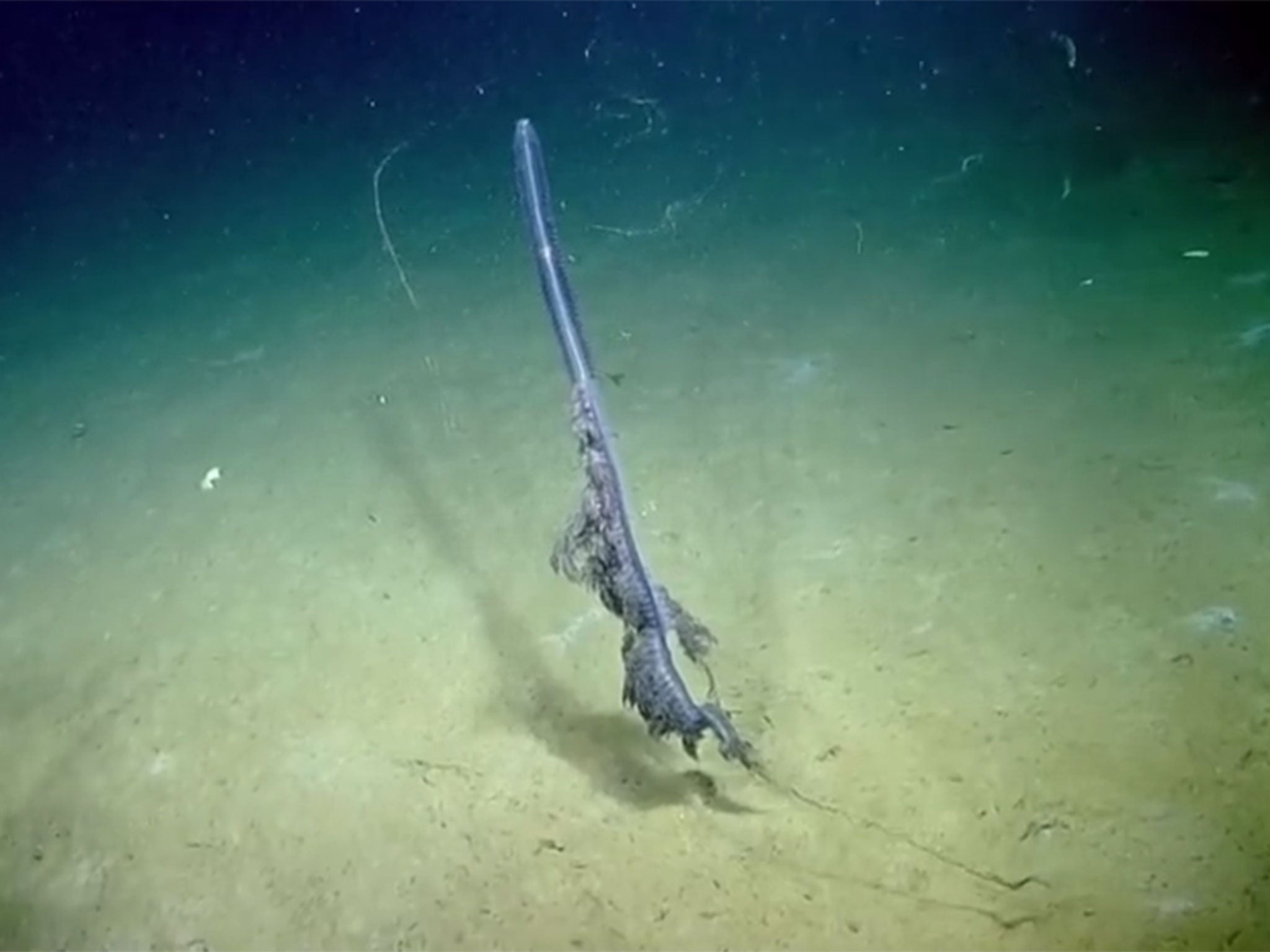Siphonophore video: Marine biologists capture rare sea creature in the Gulf of Mexico
The creature may look like a jellyfish but is in fact a colony of organisms that work together to eat, move and breathe

Your support helps us to tell the story
From reproductive rights to climate change to Big Tech, The Independent is on the ground when the story is developing. Whether it's investigating the financials of Elon Musk's pro-Trump PAC or producing our latest documentary, 'The A Word', which shines a light on the American women fighting for reproductive rights, we know how important it is to parse out the facts from the messaging.
At such a critical moment in US history, we need reporters on the ground. Your donation allows us to keep sending journalists to speak to both sides of the story.
The Independent is trusted by Americans across the entire political spectrum. And unlike many other quality news outlets, we choose not to lock Americans out of our reporting and analysis with paywalls. We believe quality journalism should be available to everyone, paid for by those who can afford it.
Your support makes all the difference.A group of marine biologists were in for an unexpected surprise when a deep sea expedition led to a close encounter with one of the ocean depth’s rarest creatures.
When exploring the ocean bed in the Gulf of Mexico, scientists from the Nautilus Live team came across an extremely rare purple species of siphonophore.
Although the creature may look on the surface like an elongated jellyfish, each species is in fact not just one organism but a colony of individual organisms that are connected together.
Each of these tiny organisms, or zooids, has a highly specialised function within the colony to ensure that the siphonophore can move, eat and breathe.
Writing for Deep Sea News, marine biologist Rebecca Helm wrote that the footage “truly stood out.”
“To me, the best part of science is stuff like this: seeing something that completely takes my breath away. Even after studying animals like this for the last five years, this video has me in awe. The animal captured in this footage, simply put, is stunning” wrote Helm.
The most common siphonophore is the well-known and sometimes deadly Portuguese-Man-of-War known for its fluorescent colour and venomous sting. Nevertheless, there are more than 175 different species of siphonophore that have been discovered, with the Praya Dubia regarded as the longest animal in the world measuring between 30 and 50 meatures – twice the size of a blue whale.
The extraordinary footage taken in June has proved a major viral hit, with web users with over 2 million people viewing the video on the Team Nautilus Youtube channel.
The Nautilus Live Expedition is headed by Dr Thomas Ballard, the man who famously discovered the wreck of the Titanic, and is part of an online website that aims to capture and broadcast some of the ocean depths most interesting and rare creatures to a wider audience.
Subscribe to Independent Premium to bookmark this article
Want to bookmark your favourite articles and stories to read or reference later? Start your Independent Premium subscription today.
Join our commenting forum
Join thought-provoking conversations, follow other Independent readers and see their replies
Comments